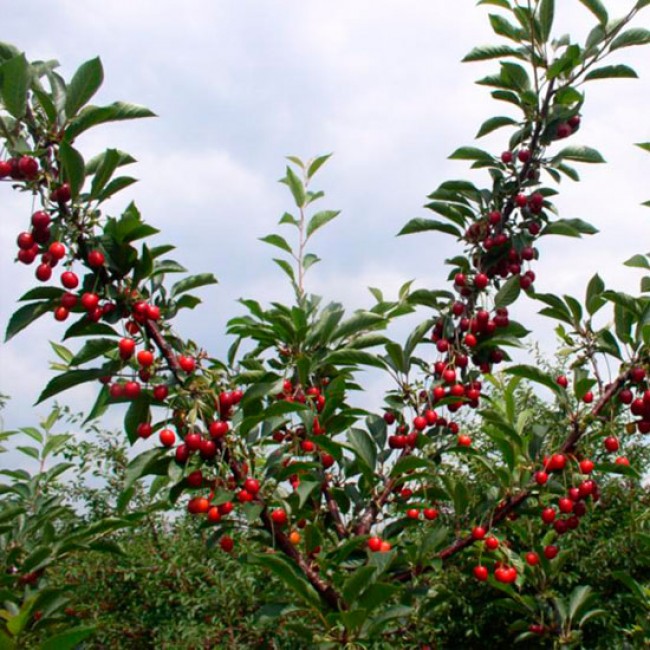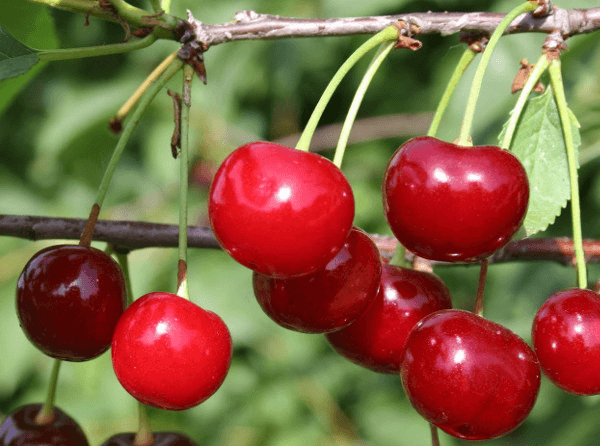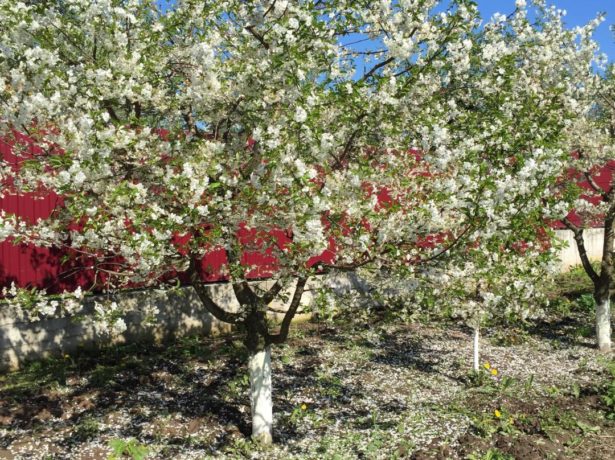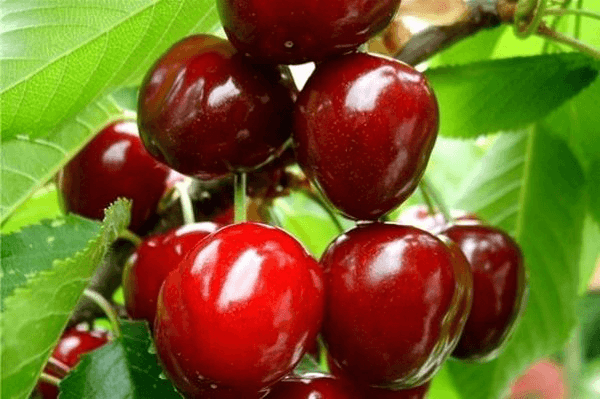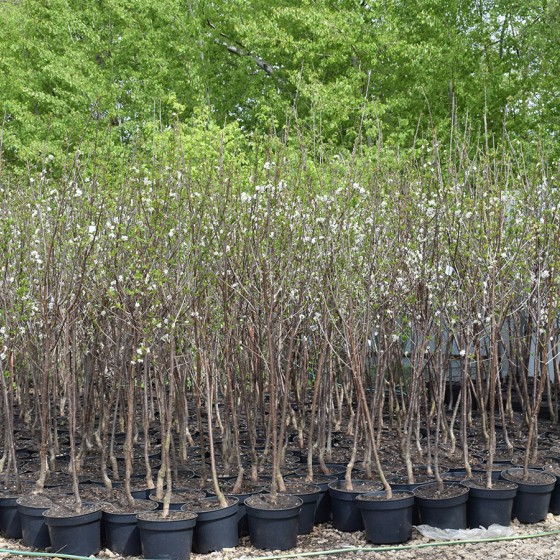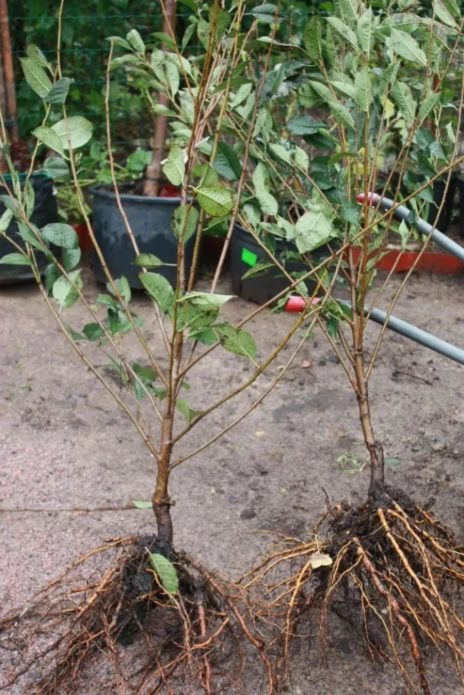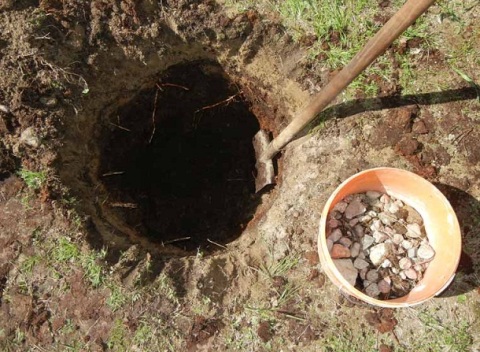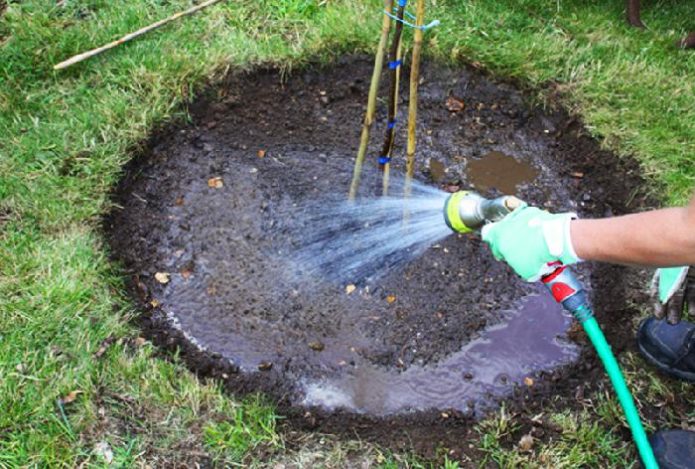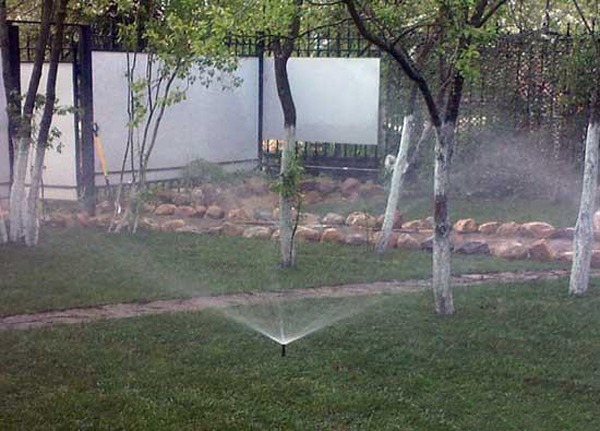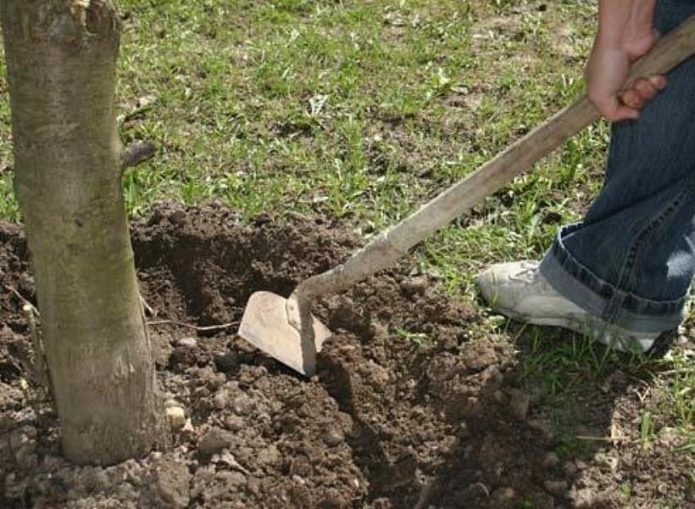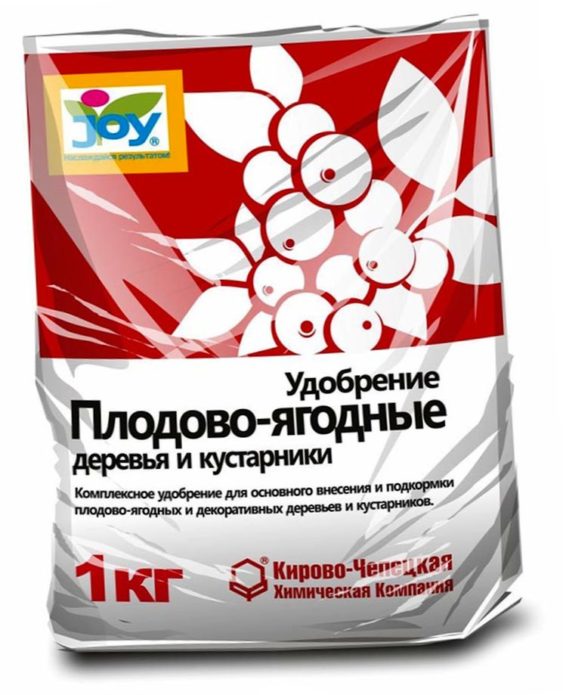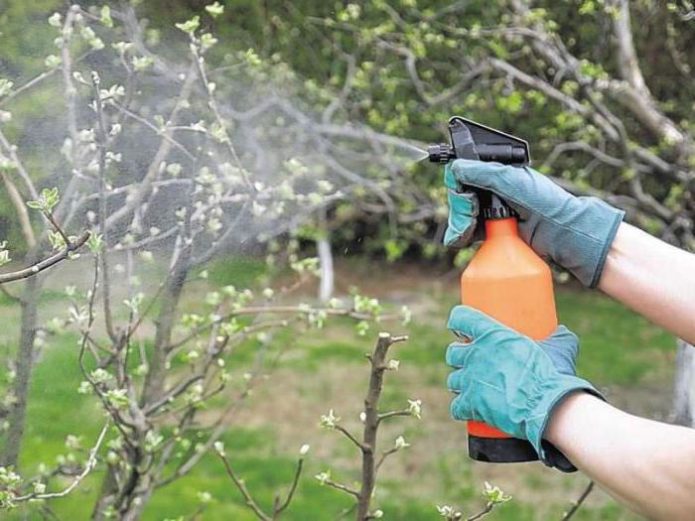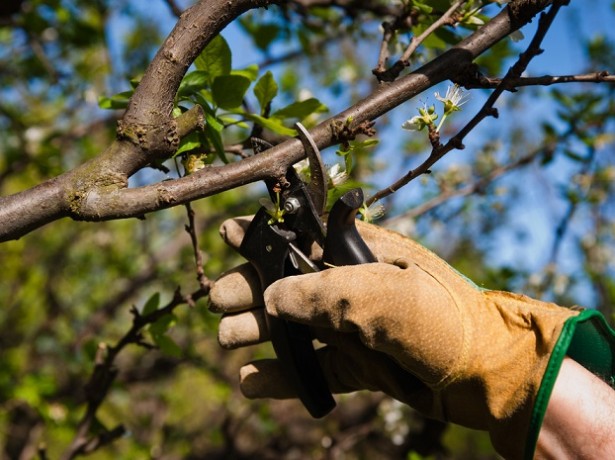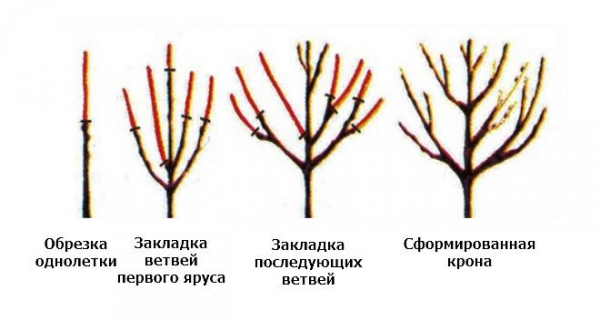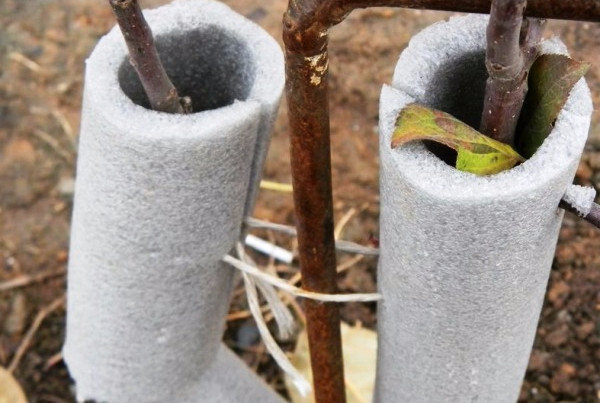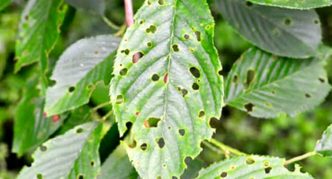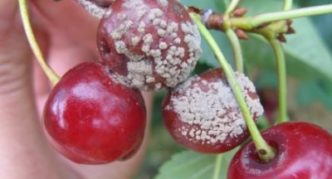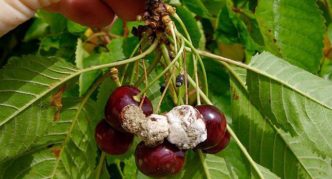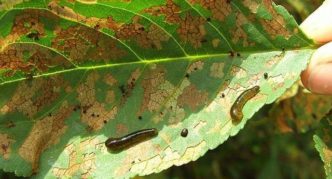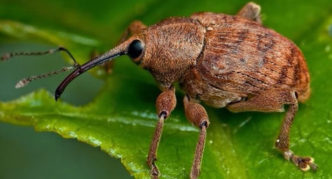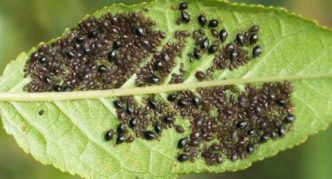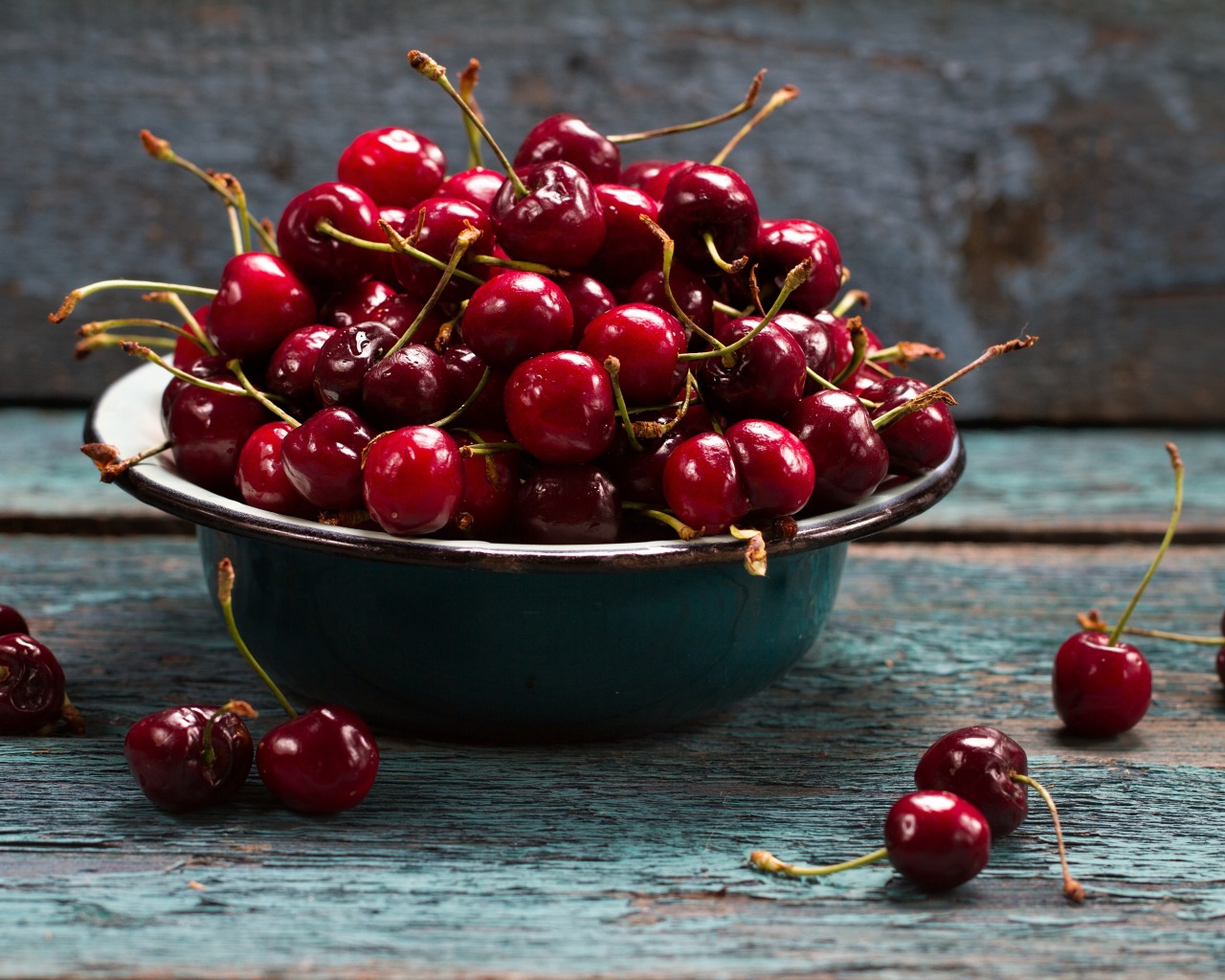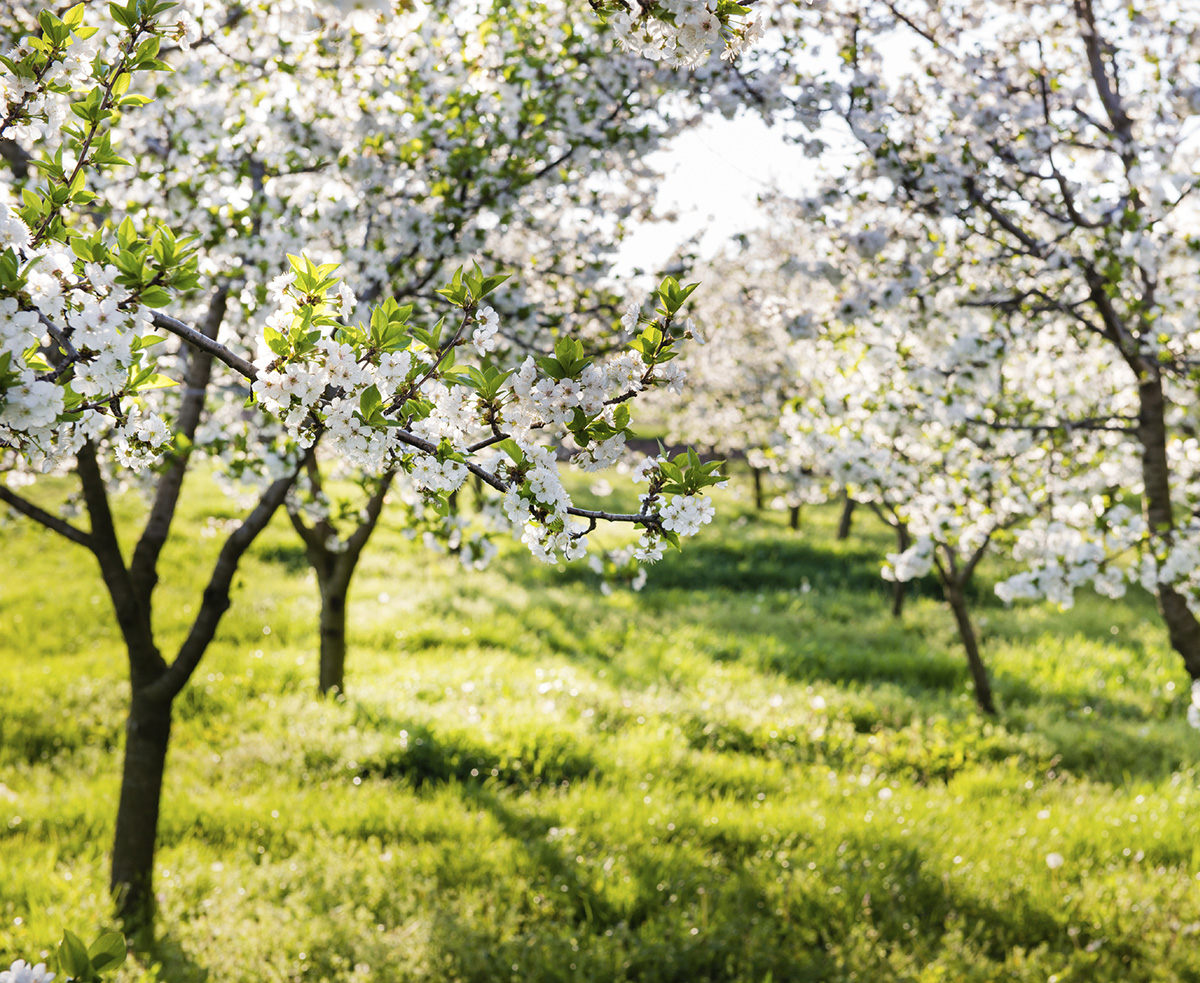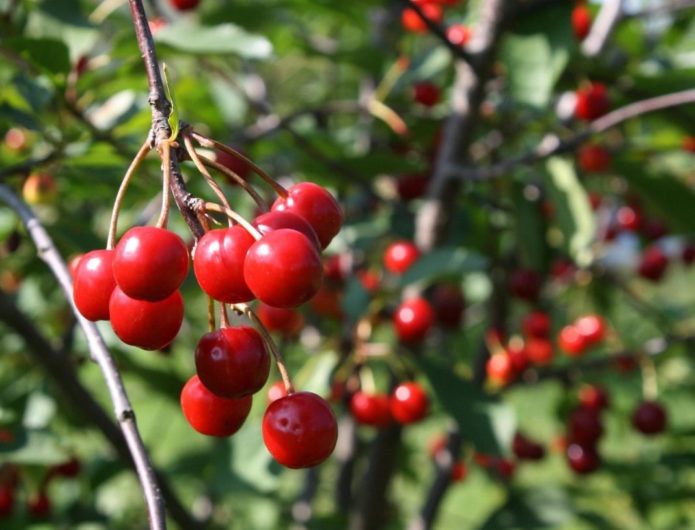Cherry has been cultivated since ancient times. It was first described in the 3rd century BC. the ancient Greek botanist Theofast. The main task of breeders of our time is to create species that are resistant to adverse conditions and pathogens. Now about 1000 varieties of crops are known, but the basis of its assortment is only a few that can withstand extremely cold winters and are resistant to diseases. These include cherry Zhivitsa.
Content
Variety history
This is a variety of Belarusian selection, obtained by E.P. Syubarova, P.M. Sulimova and M.I. Vyshinskaya by crossing the early Spanish cherry Griot Ostheim and the German yellow Denisen cherry. From its "parents" Zhivitsa inherited early ripening, large size of fruits, frost resistance, regularity of fruiting.
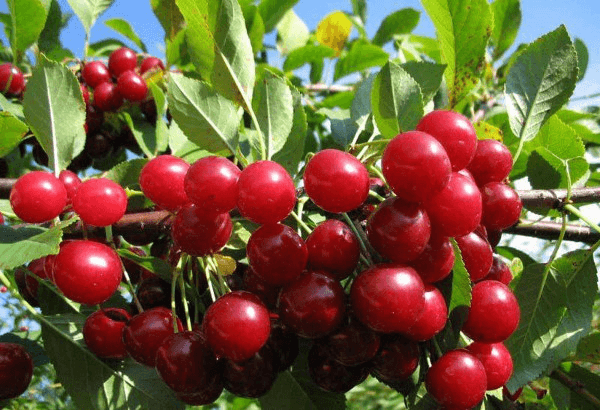
Cherry Zhivitsa is a variety of Belarusian selection that has received recognition from Russian gardeners
The variety is included in the State Register in 2002 for cultivation in the Vladimir, Ivanovo, Kaluga, Moscow, Ryazan, Tula and Smolensk regions. In Russia it is often called Gamma. For more than 15 years of cultivation, no freezing of the tree was noticed even in severe winters. The gum is resistant to a complex of diseases, especially coccomycosis and moniliosis, often affecting stone fruits.
Description of cherry variety Zhivitsa
Zhivitsa is a frost-resistant productive variety with a medium-early ripening period (late June - early July). The tree is medium-sized, up to 2.5 m in height with an even trunk and a compact, medium-thickened rounded crown... Blooms in May with white fragrant flowers. The variety is self-fertile, requiring additional pollinators.
It starts bearing fruit in the 4th year of planting. Fruit ovaries are formed on bouquet twigs and last year's growth. The variety is fruitful, from one hundred square meters you can collect 100-140 kg of berries.
Fruits are round, even, average weight - 3.7 g. The skin is dark red, smooth, of medium density. Burgundy-red pulp, tender, sweet and sour, taste score - 4.8 points. The stone is small, easily separated from the fetus.
Video: harvest of cherries of different varieties
Landing features
Cherry productivity is due to many conditions: temperature and water conditions, planting site, soil composition, quality of planting material.
Seat selection
The southern or southwestern slopes should be allotted for the cherry orchard. Usually, for planting, they choose a place near the fence, sheds, where a warm microclimate is created and more snow accumulates.
The site should be well lit, light shading is acceptable. In the shade, the bouquet twigs die off, the yield decreases, the berries lose their sweetness.
The most suitable are light loamy and sandy loam soils, water and air permeable. Cherry grows poorly in heavy clay areas and gives poor yields.Therefore, to improve such land, sand is necessarily introduced (1 bucket / 1 m2). Peaty soils are also not suitable for this culture - they are cold, poorly nutritious, with a high level of acidity.
Cherry trees should not be planted in low-lying wetlands. With a close passage of groundwater and the threat of flooding, drainage taps must be made, excess water can lead to root decay and the development of diseases.
Cherry Zhivitsa is self-fertile, with self-pollination, only 20% of the fruits will set, so it needs additional pollinators. When planning the site, it is necessary to leave enough space for trees of other varieties (Vianok, Novodvorskaya, Seyanets No. 1, cherry varieties).
To attract bees and bumblebees, you can plant melliferous herbs next to cherries: lemon balm, mint, yarrow, oregano. Cold, rainy weather during flowering, when bee flight is limited, can adversely affect yields. To improve pollination, experienced gardeners spray the buds with the preparations Ovary, Bud.
Boarding time
Cherries are planted during the dormant period of the root system, in spring or autumn. In the central regions, it is better to plant plants in autumn, all September to mid-October, but no later than 3 weeks before the onset of cold weather: the trees will have time to take root and prepare for wintering. In the Urals and Siberia, it is better to plant seedlings in early spring, since during autumn planting there is a great risk that they will not have time to take root before frost and die.
Container seedlings take root well both in spring and at the end of the season.
Where to buy seedlings
The nurseries offer a large selection of varieties, zoned for certain climatic zones. Better to buy 1–2 year old plants - they take root better. An annual seedling must be at least 1 m in height, with 3-4 skeletal branches. Such a plant is more resistant to disease and temperature changes, less whimsical to care for. Stems should be flexible, with bark without spots (if you scrape it off a little, you can see green flesh), roots - 30–45 cm long, light in color, not overdried, without outgrowth or damage. Brown color, swelling and unevenness of the roots are signs of the disease.
The tree must be grafted - the site of grafting can be identified by a slight thickening and curvature on the trunk 10 cm from the root collar.
Landing rules
The plot is prepared for spring planting - from autumn, for autumn - in 2 weeks, so that the earth has time to settle. Dig holes 60x60 cm at a distance of 3 m from each other and leave 5 m between the rows. The fertile soil layer is mixed with superphosphate (100 g) or 3 buckets of compost and 1 liter of ash. Sand is applied to clay areas (1 bucket / 1 m2), humus and peat are added to the sandy soil (bucket / 1 m2).
Step by step process:
- A fertile soil layer in the form of a cone is poured into the hole.
- A seedling is placed in the center of the pit, the roots are spread on the sides.
2 hours before planting, the roots of the seedlings can be dipped in a solution with Kornevin or Heteroauxin preparations, which stimulate root formation and increase immunity.
- Set the peg so that it is from the northwest in relation to the tree.
- The plant is covered with fertilized soil, tamping for a snug fit of the soil to the roots.
- The root collar is not buried, it is placed 5 cm above the ground.
- A watering groove is formed around the trunk, into which 20 liters of water are introduced.
- Tie the seedling loosely to the support so that it does not swing from gusts of wind.
- After absorbing moisture, the soil is covered with sawdust 8 cm thick.
- After planting, the seedlings are cut to 1/3 of their length.
Agrotechnics
In order for a cherry orchard to bear fruit for a long time, it is necessary to take care of it: feed it, water it, prune it in time and take preventive measures against pests.
Watering and loosening
Cherry is a relatively drought tolerant plant that needs moderate regular moisture. The trees planted in spring should be watered at first 1-2 times a week, 30 liters per plant. Then less often, once a month is enough. For a fruit-bearing tree, the norm is 5-7 buckets:
- in the green cone phase;
- after flowering;
- during the formation of ovaries;
- after harvest.
With a lack of moisture at the beginning of the growing season, foliage grows weakly, during the flowering period, ovaries form sluggishly, during fruiting, the mass of berries decreases.
Watering after harvest is very important. For better wintering in dry autumn weather, it is imperative to carry out water-charging watering. The soil is moistened to a depth of 40 cm, using at least 80 liters per 1 m2.
Cherries are watered by introducing water into the irrigation furrows, by sprinkling or by means of a drip irrigation system.
- Drip irrigation is carried out using belts with droppers, into which water is supplied under pressure. This allows you to maintain the necessary soil moisture, and also significantly reduces water consumption.
- For irrigation of fruit trees with sprinkling, hoses with sprinklers are used, while not only the roots, but also the crown are moistened, which is especially important in hot dry weather.
- Summer residents often use irrigation along the grooves, which are made around the trunk and bring water into them. After absorbing moisture, the furrows must be closed.
When the berries ripen, watering is not carried out to avoid cracking.
The trunk circle should be kept clean. It is necessary to remove weeds, loosen the soil to a depth of 10 cm, mulch the trunk circle with hay and straw.
Top dressing
Top dressing provides a large yield, increases plant immunity. Fertilizers are applied in the 2nd year of planting.
- At the beginning of the growing season, for accelerated growth, young trees are fed with nitrogen fertilizers (30 g of urea / 10 l).
- Before flowering in calm weather, the crown is sprayed with Ideal (5 ml / 5 l).
- In September, feed with a phosphorus-potassium solution (2 tbsp. L / 10 l).
At the onset of fruiting, the fertilizer rate is increased by 1.5 times.
- In early spring, urea (120 g / 1 m2) are scattered over the surface along the periphery of the crown projection for loosening or before rain without embedding in the soil.
- In the green cone phase, add superphosphate (50 g / 10 l), after the petals fall off - nitrophosphate (50 g / 10 l).
- At the end of the season, the trunk circle is mulched with humus.
- Once every 5 years, the soil is deoxidized with lime (500 g / 1 m2).
By the appearance of the tree, you can determine what elements it needs. An iron deficiency is indicated by premature fall of foliage. With a shortage of boron, the leaves are deformed and dry out. The lack of copper can be judged by the small brown spots on the leaf plates. If the leaves become smaller, it means that the plant lacks zinc.
Root feeding should be combined with foliar feeding. During the season, foliage is sprayed several times with an interval of 2 weeks with Agricola (50 g / 10 l), Zdraven-aqua (35 ml / 10 l), which stimulate plant immunity, have an anti-stress effect, and create good conditions for fruiting. During flowering, for better pollination, the tree can be sprayed with a boric acid solution (1 g / 10 l), adding 100 g of honey to attract bees.
Gardeners recommend removing some of the fruits at the greenhouse stage, the rest will be noticeably larger and tastier.
Gardeners with many years of experience prefer to combine organic and mineral fertilizers. In the spring, when the culture needs nitrogen, add mullein (3 kg / 30 l) or chicken manure (2 kg / 30 l), before fruiting - ash (300 g / 1 m2).
Pruning
Without regular pruning of cherries, you cannot expect high yields. With a slight arrest of annual shoots and bouquet branches, branching is stimulated, but too much shortening leads to weakening of the branches. When thinning, broken, dried and growing branches are removed. They are cut off completely, the cuts are treated with pitch. Root shoots are removed regularly.
The first 5 years in early spring, with the help of pruning, form a crown, usually in a sparse-tiered type, laying up to 10 skeletal branches. Immediately after the spring planting, the trunk is shortened to 75 cm.When planting in autumn, this is not recommended, it is better to postpone it until spring. At the beginning of the second season, branches are cut off on the bottom row, leaving the 3 strongest ones, cut them by 1/3. The central shoot is cut at 1 m from the bottom row. In spring pruning in the 3rd year, a second tier of 3 shoots is formed, the guide is shortened at a height of 1 m from the second row. For the next season, 3 branches are left in the last (third) tier.
Over time, yields decline and the tree needs rejuvenating pruning. Old skeletal branches and ramifications are replaced with healthy lateral ramifications.
Video: features of pruning cherries
Preparing for winter
Zhivitsa is a frost-resistant variety, but in ordinary winters with long thaws, flower buds can freeze. Therefore, trees should be prepared for cold weather. After the end of the growing season, you need to whitewash the stem. Due to temperature changes on a sunny day with thaw and frost at night, the bark without protection can crack.
In the pre-winter, the soil along the perimeter of the crown is loosened and well moistened to a depth of at least 50 cm. So the ground freezes more slowly, and the roots of trees do not suffer from cold shock, they winter easier. Well-watered soil is covered with sawdust. It would be useful to cover the trunk and skeletal branches with non-woven material, especially in young trees.
To avoid drying out, cherries are insulated in the established cool weather (00C). When the temperature rises to 50C, the shelter is removed.
Harvest is also hit by spring frosts during flowering. Buds die at a temperature of -40C, flowers -20C, ovary -10C. Such cold snaps are especially dangerous when the temperature is 6-100C, and at night it drops to minus marks. Fan irrigation (50–80 l / tree), spraying the crown with water, and smoke can mitigate the harm from recurrent frosts in May. Treatment before and after frost with stimulants (Epin) also helps, which significantly increases the resistance of plants to low temperatures.
Disease prevention
The gum has a high immunity to infections, however, even such a resistant variety, especially in young plantings, can be affected by diseases.
Table: cherry diseases
| Diseases | Symptoms | Prevention | Treatment |
| Clasterosporium disease | Spots appear on the foliage, subsequently holes form in their place. The leaves dry up. The development of a fungal disease is facilitated by the thickening of the bush and high humidity. |
| Treat with 1% Bordeaux mixture (100 g / 1 l) before and after flowering, again after 2 weeks. |
| Gray rot | The disease develops in damp weather. Gray growths appear on the shoots, the fruits begin to rot. |
|
|
| Anthracnose | Cherry fruits become stained, shriveled and mummified. Rainy weather contributes to the development of the disease. |
| Spray with Nitrafen (300 g / 10 l) until the buds pop out. |
Photo Gallery: Signs of Cherry Disease
- In case of clasterosporium disease, rounded light brown spots appear on the leaves, after a week the affected tissue dies off and falls out
- Gray mold infections often occur in rainy, foggy springs
- With anthracnose, the fruits become stained and dry out
Flocks of birds can instantly destroy most of the berries. To protect the crop from birds, special nets are placed on the branches with ripe fruits.
Table: insect pests
| Pests | Manifestations | Prevention | Measures |
| Cherry fly | The larvae, feeding on the pulp of the fruit, can damage up to 70% of the crop. |
| After flowering, spray with Iskra (1 ml / 5 l), Aktara (2 g / 10 l), again after 7 days. |
| Slimy sawfly | The larvae gnaw the pulp of the leaf, leaving only the veins. |
| Treat with Aktara (2 g / 10 l), Calypso (2 ml / 10 l) repeatedly during the growing season, but no later than 20 days before harvest. |
| Weevil | Beetles eat buds and leaves. |
| Spray in the green cone phase with Fufanon (10 g / 10 l). |
| Aphid | Aphids colonize leaves and stems, feeding on their sap. Young shoots dry up and die. |
|
|
Photo gallery: insects threatening cherries
- Brilliant black small fly 5 mm long lays eggs in fruit
- The larvae of the slime sawfly feed on the pulp of the foliage, leaving only the veins
- Weevils feed on buds and young leaves
- Aphids are especially harmful to young gardens.
Reviews
I planted varieties of our local Belarusian selection - Lasukha, Belarusian Griot and cherry-cherry hybrid Zhivitsa. All are self-infertile, but winter-hardy and resistant to diseases such as coccomycosis and moniliosis. For pollination, I planted a number of cherries of the Iput varieties and the Belarusian variety Sopernitsa. Hopefully now I will have a good harvest.
I have planted Zhivitsa and Rival cherries this season (except for dykes). Cherry variety Zhivitsa is an early ripening variety, fruitful (up to 10 t / ha with a planting pattern of 5x3 m on a wild cherry seed stock), winter-hardy in almost all components. It begins to bear fruit in the 4th year after planting in the garden and quickly gains a harvest.
Zhivitsa (Belarus) is a fast-growing variety with a spherical crown. Fruits are medium, sour-sweet, very good taste, with a small stone. Winter-hardy, highly resistant to coccomycosis and moniliosis.
Cherry Zhivitsa conquered gardeners not only with its yield and dessert taste of fruits. The variety is valued for its high resistance to diseases and the ability to endure the harsh winters of central Russia without damage. The extraordinary beauty of the plant during flowering and fruiting is also attractive. The compact tree is used in landscape design when laying out gardens and forming alleys.
